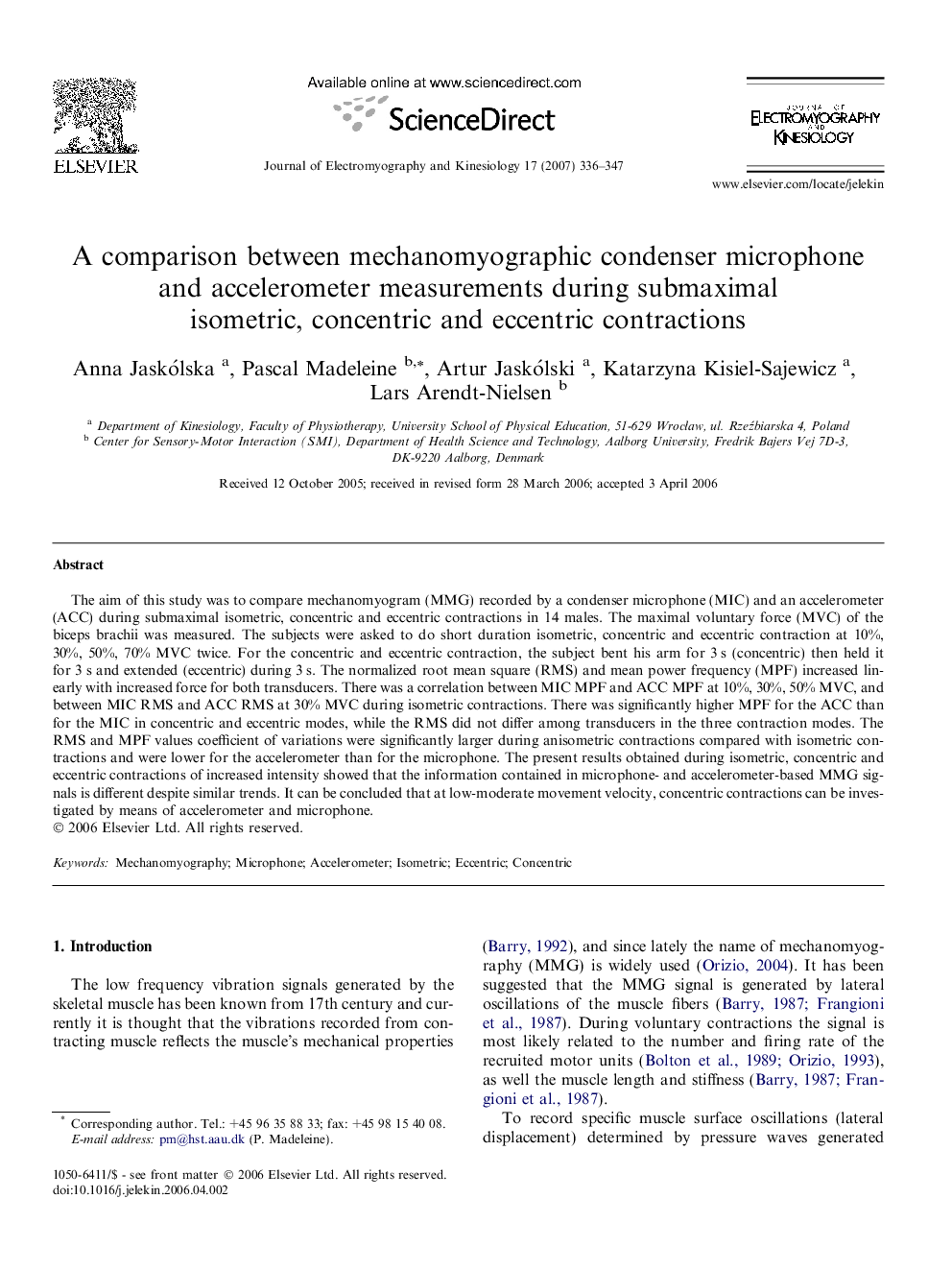| Article ID | Journal | Published Year | Pages | File Type |
|---|---|---|---|---|
| 4065594 | Journal of Electromyography and Kinesiology | 2007 | 12 Pages |
The aim of this study was to compare mechanomyogram (MMG) recorded by a condenser microphone (MIC) and an accelerometer (ACC) during submaximal isometric, concentric and eccentric contractions in 14 males. The maximal voluntary force (MVC) of the biceps brachii was measured. The subjects were asked to do short duration isometric, concentric and eccentric contraction at 10%, 30%, 50%, 70% MVC twice. For the concentric and eccentric contraction, the subject bent his arm for 3 s (concentric) then held it for 3 s and extended (eccentric) during 3 s. The normalized root mean square (RMS) and mean power frequency (MPF) increased linearly with increased force for both transducers. There was a correlation between MIC MPF and ACC MPF at 10%, 30%, 50% MVC, and between MIC RMS and ACC RMS at 30% MVC during isometric contractions. There was significantly higher MPF for the ACC than for the MIC in concentric and eccentric modes, while the RMS did not differ among transducers in the three contraction modes. The RMS and MPF values coefficient of variations were significantly larger during anisometric contractions compared with isometric contractions and were lower for the accelerometer than for the microphone. The present results obtained during isometric, concentric and eccentric contractions of increased intensity showed that the information contained in microphone- and accelerometer-based MMG signals is different despite similar trends. It can be concluded that at low-moderate movement velocity, concentric contractions can be investigated by means of accelerometer and microphone.
